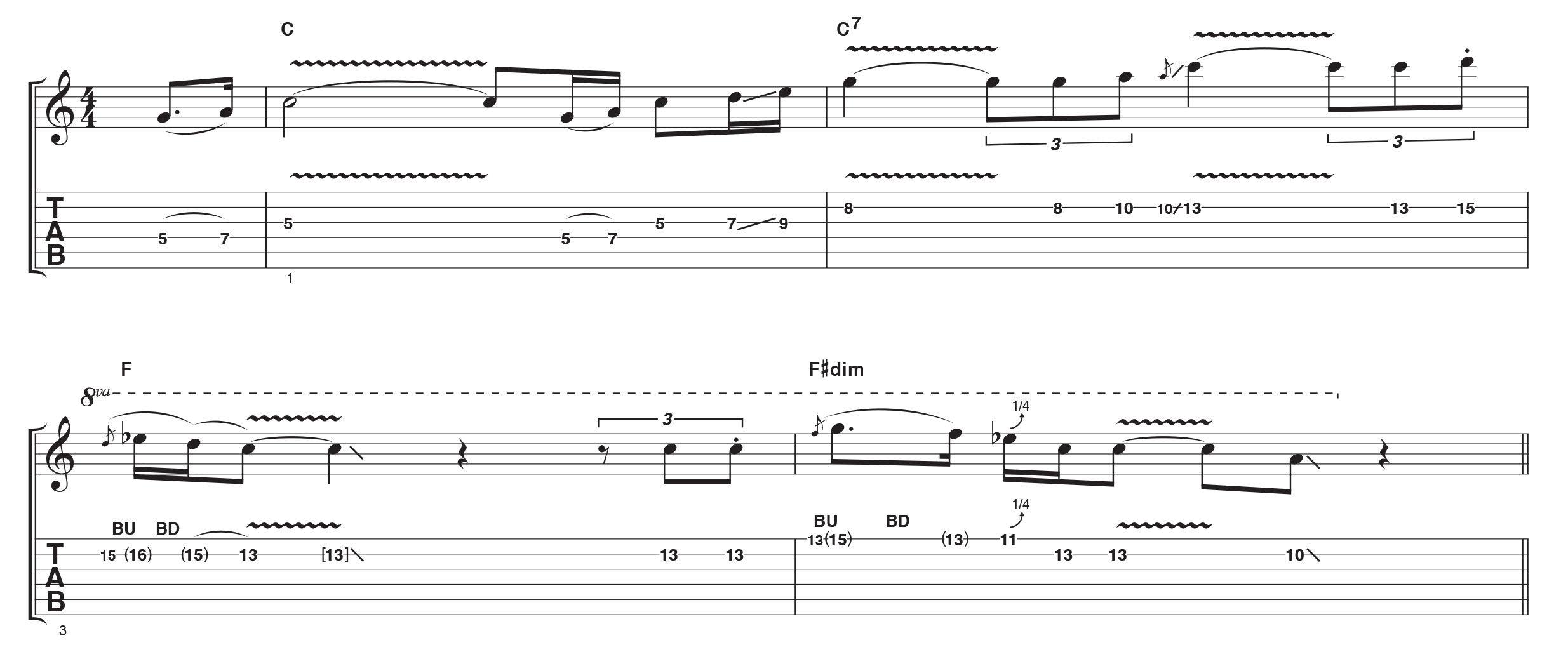5 guitar tricks you can learn from Jonny Lang
Checking out the Dakota-born blues ace’s fiery playing style

Jonny took up guitar at the age of 12, with an interest in blues as well as more contemporary pop styles. Though this can be heard in his music, it’s clear that the blues is what informs his electric guitar lead playing most profoundly. His phrasing is sometimes quirky, often playing along a string, rather than staying within more traditional pentatonic shapes - though he does, of course, use these, too.

Jonny is a fine rhythm player, but as a singer, he often uses his guitar skills to play ‘answering’ phrases to vocal lines and, of course, the occasional solo. He employs a variety of Gibson and Fender guitars - with a particular fondness for the Telecaster, but any type of electric will work for our lesson.
These examples highlight Jonny’s use of both a traditional smooth overdrive and a jagged Hendrix-style fuzz, though the playing style remains the same, whichever sound or style of guitar you use.
Though all the examples are faithfully transcribed, you may want to ‘push and pull’ the timing a little. That is to say; don’t be too precise. Instead, try pulling back and playing some of the phrases ever so slightly behind the beat. This is a very effective blues lead trick, though like all things, don’t overdo it!
1. Playing behind the beat

This is a very slow tempo, so take care not to rush. If you accidentally play ahead of the beat you’ll end up with a tense, ‘anxious’ sound, rather than the laid back feel this lick needs. You could even aim to play slightly behind the beat on occasion to enhance the vibe. Despite the slow tempo, aim for a rapid, deep vibrato.
2. Taking it down

An alternate take over the same backing as our previous example, this time we’re playing in a lower register. Note the use of grace notes, string bends and vibrato - all expressive musical devices that bring this phrase to life. We’ve also used slides in bars 1 and 2 as a way to make the position shifts easier.
3. Triplet phrasing

Notice the triplets played with staccato phrasing in bar 1. These give a sense of pulling back the tempo, giving our lick a lot more gravitas than simply playing by numbers. Really take some risks and push the timing here; see how far you feel is ‘out of time’ as opposed to expressive!
Get the MusicRadar Newsletter
Want all the hottest music and gear news, reviews, deals, features and more, direct to your inbox? Sign up here.
4. Fuzzy bends

Changing to a more uptempo vibe and using a bright fuzz style distortion, this example begins with a series of shrill unison bends, before shifting down to a slightly lower register for some pentatonic phrasing. The opening bends can be drawn out to make the most of the two clashing notes.
5. Minor pentatonic lick

It’s all about the bends, vibrato and sustain at the start of bars 1 and 2. The lick is based in the C minor pentatonic scale throughout so, hopefully, it’ll feel familiar to you very quickly. As always, pay close attention to small, seemingly insignificant details like staccato notes, pull-offs and quarter-tone bends - these are vital to the feel.
Total Guitar is Europe's best-selling guitar magazine.
Every month we feature interviews with the biggest names and hottest new acts in guitar land, plus Guest Lessons from the stars.
Finally, our Rocked & Rated section is the place to go for reviews, round-ups and help setting up your guitars and gear.
Subscribe: http://bit.ly/totalguitar
"An unholy amount of features in a standard-sized compact pedal": Mooer Prime Minimax M2 Intelligent Pedal review
“The most musical, unique and dynamic distortion effects I’ve ever used”: Linkin Park reveal the secret weapon behind their From Zero guitar tone – and it was designed by former Poison guitarist Blues Saraceno’s dad










